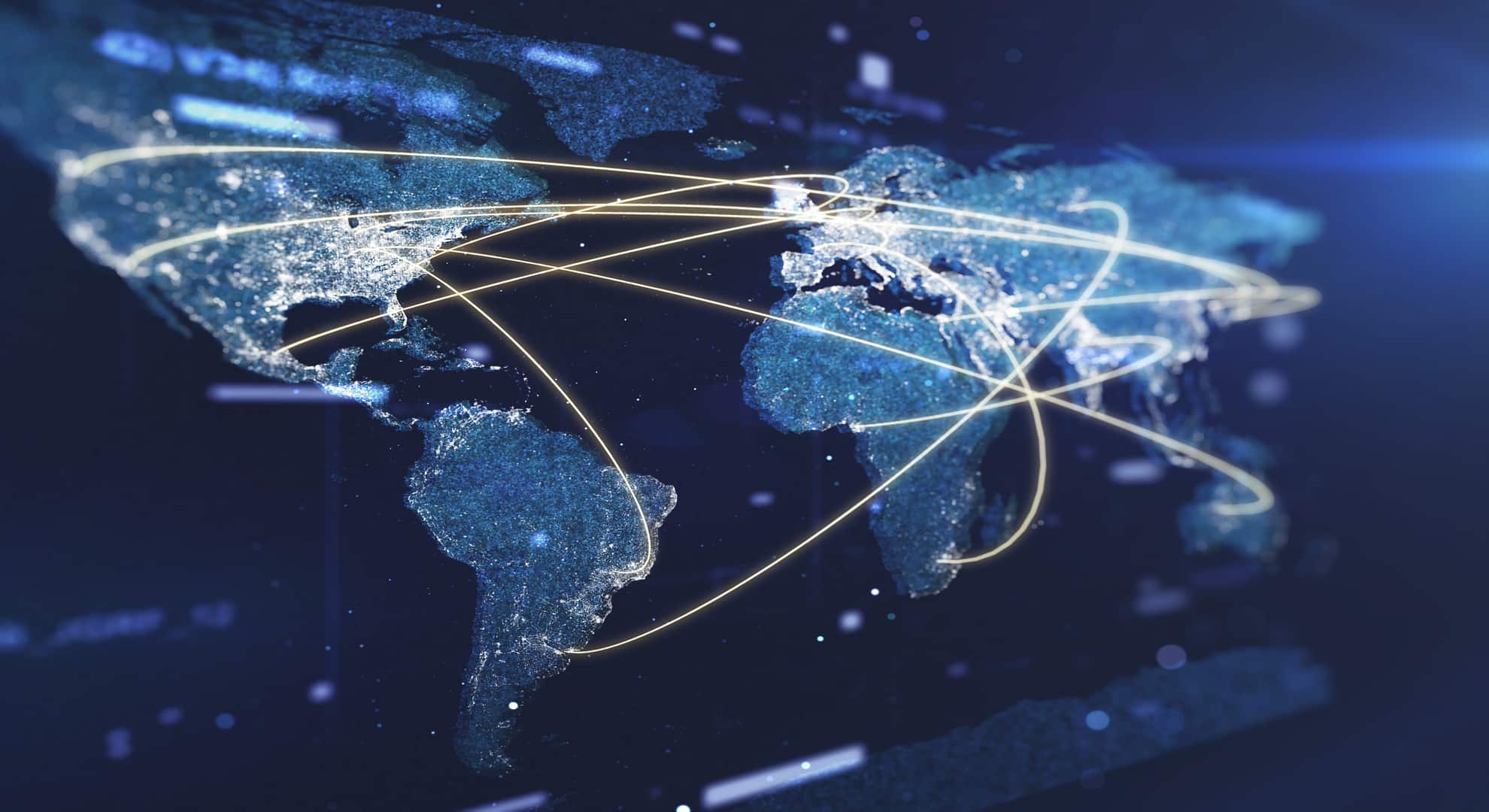
12 Aug Universal digital connectivity: present challenge or future dream?
One dream shared by everyone who’s passionate about technology, whether they’re an academic or just an everyday user, is to live in a society with permanent connectivity. A world where you can be online at all times, whatever you’re doing and wherever you are on the planet, every second of the day, every day. This kind of universal digital connectivity would represent a giant leap forward in communications, transport, education, leisure, commercial relations, remote working, and so on.
Although it’s a scenario more often associated with science fiction than reality, 5G connectivity has come a long way in recent years and now aspires to become the global standard for wireless communication and data transmission between devices. This would bring the possibility of universal connectivity much closer to ‘real life’. But just because that’s the case in developed countries, will the same automatically happen in the rest of the world?
Connectivity gaps in developing countries
As one of its seventeen Sustainable Development Goals (SDG) for 2030 – and particularly the one focussed on industry, infrastructure and innovation – the UN establishes connectivity, R&D and innovation as fundamental factors. Is this an achievable ambition? In 2021, some 4.9 billion people used the Internet, according to the International Telecommunication Union (ITU). This represents a significant boost, if we compare that figure to the 4.1 billion who used it in 2019, but it’s also true that 37% of the world’s population has never accessed the Internet. Of these people ‘digitally excluded’ in terms of connectivity, 96% live in developing countries, according to data from the same source.
It was the ITU itself that recently organised the World Telecommunication Development Conference in Kigali (Rwanda). As part of the event, the UN Secretary General, António Guterres, encouraged stakeholders in the technology industry to boost their efforts to achieve universal digital connectivity. “More than a third of humanity still does not have access to the Internet and this gap only reinforces social, economic and gender divisions”, he said.
Where do we need to boost efforts in order to achieve universal connectivity?
The forty-six least developed countries (LDCs), as designated by the UN, increased the number of users accessing the Internet by more than 20% in 2019 and 2020, according to the ITU. This growth, which was almost certainly associated with the global pandemic, however, occurred through sporadic, short-term connections, or through the use of shared devices. If we’re really going to aspire as a society to universal connectivity, what should be done instead? Although it’s a complex situation to address with one-dimensional solutions, the main focusses of attention should likely be:
- Digital education. Providing basic skills in technology, devices and connectivity to the largest possible number of demographic profiles. If possible, from the early stages of the educational process.
- Access to affordable devices. LDCs should be given sufficient technological resources, in terms of devices and interfaces. Currently, many of these countries are exploited so that developed nations can obtain essential raw materials for ICT and are, at the same time, the destination of much of our ‘technological waste’, while the acquisition of the latest technology continues to be a privilege.
- Infrastructure. The widespread deployment of facilities and infrastructure that allow broadband connections is also essential. The installation of fibre optic, developing 5G connectivity and the rollout of Internet connectivity via satellite in developing countries – practically virgin territory for the private sector – represent both a business opportunity and a window to the development of universal digital connectivity as a whole.

